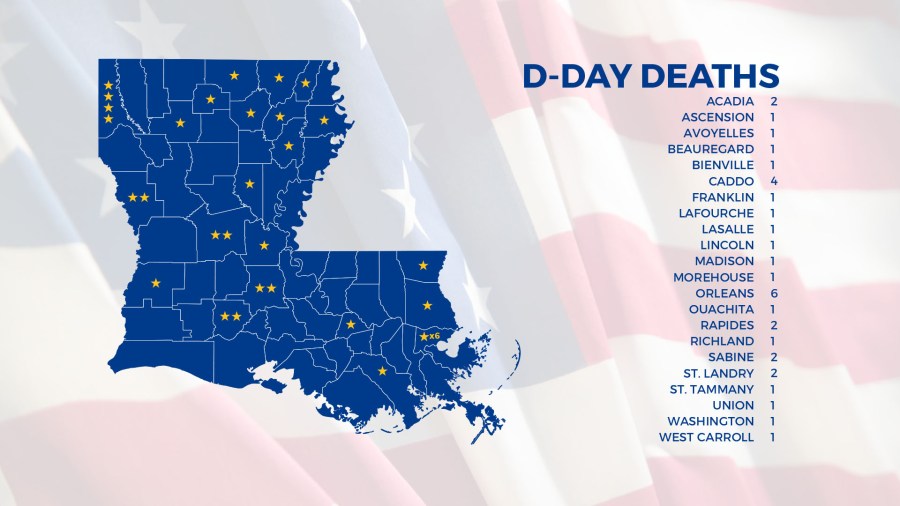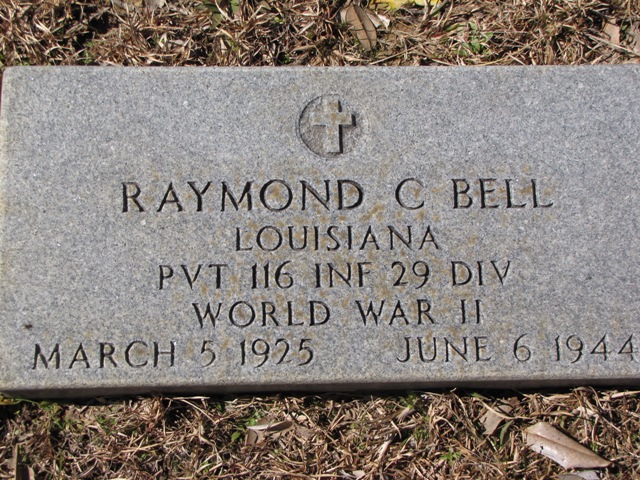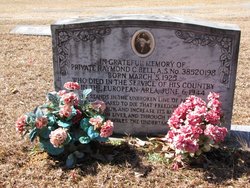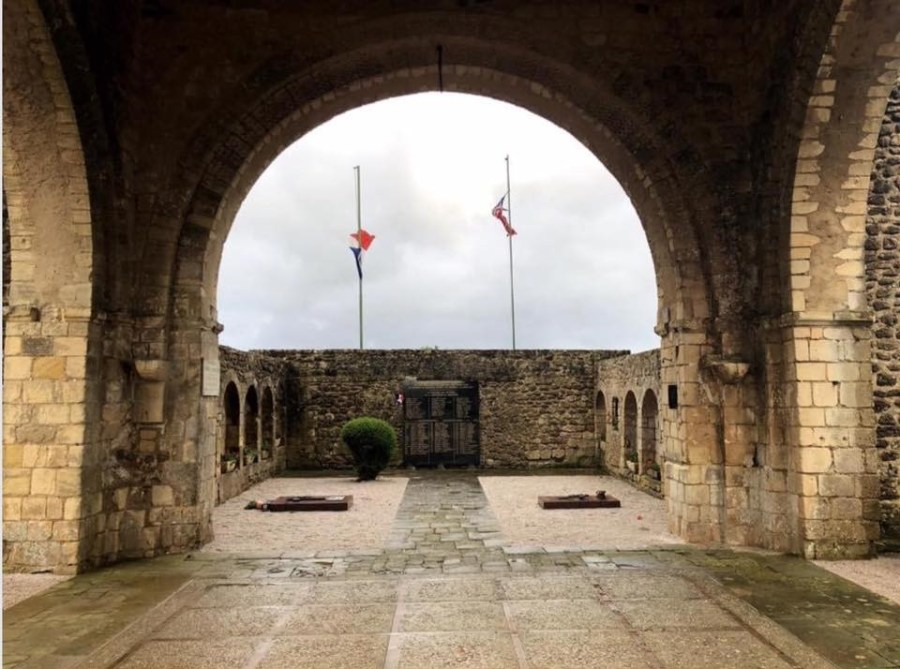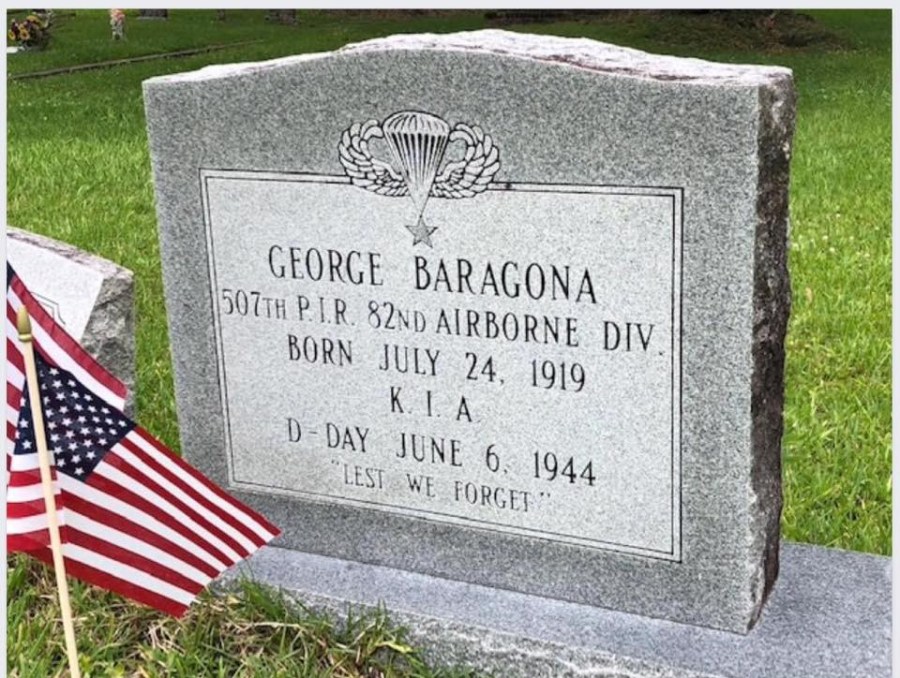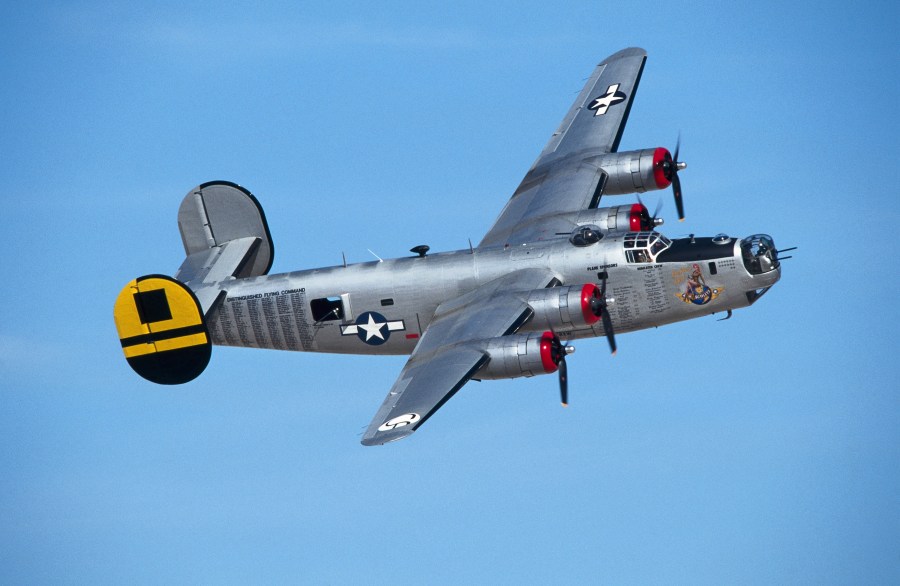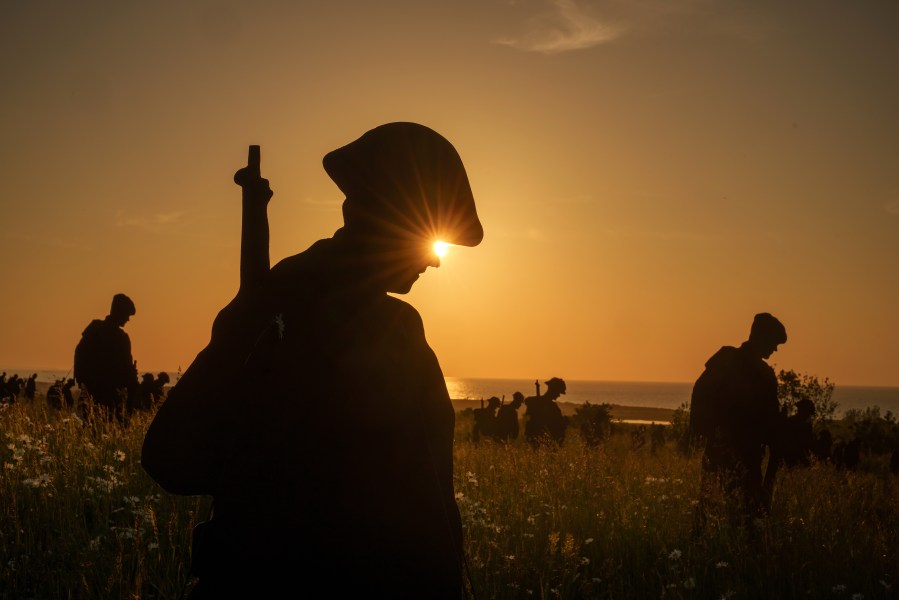NEW ORLEANS (WGNO) — As the echoes of D-Day fade, Louisiana bore deep scars of loss etched within its communities. Families endured separation from Shreveport to Eunice and from Rayne to New Orleans as their loved ones marched off to distant battlefields.
Over 5,000 of the 280,000 Louisianans who served during World War II never returned home. D-Day, a defining moment etched in history, claimed the lives of thirty-three brave souls from Louisiana, their youthful dreams silenced in Normandy.
Army Private Raymond C. Bell stormed headlong into the inferno of Omaha Beach. Bell was the youngest Louisianan to die on Omaha Beach—the fresh-faced 19-year-old from Rhinehart. Bell stood with the men of the 29th Infantry Division, 116th Regiment, 1st Battalion Company A, aboard the SS Empire Javelin.
Company A led the first wave of the assault on Omaha Beach. These courageous soldiers advanced into a harrowing storm of relentless fire from entrenched German forces. Facing near-certain death, their sacrifices carved a bloody path to the liberation of Europe.
In addition to Bell, 19 young men from Bedford, Virginia—fathers, brothers and sons—were part of Company A of the 116th Infantry Regiment, 29th Division. They became known as the Bedford Boys, who were tragically killed in the early minutes of the invasion of Normandy.
The National D-Day Memorial is in Bedford, Virginia, because the town experienced the highest per capita loss of soldiers from any U.S. community on D-Day, June 6, 1944. The memorial is a tribute to their sacrifice and the bravery of all Allied forces who participated in the Normandy landings.
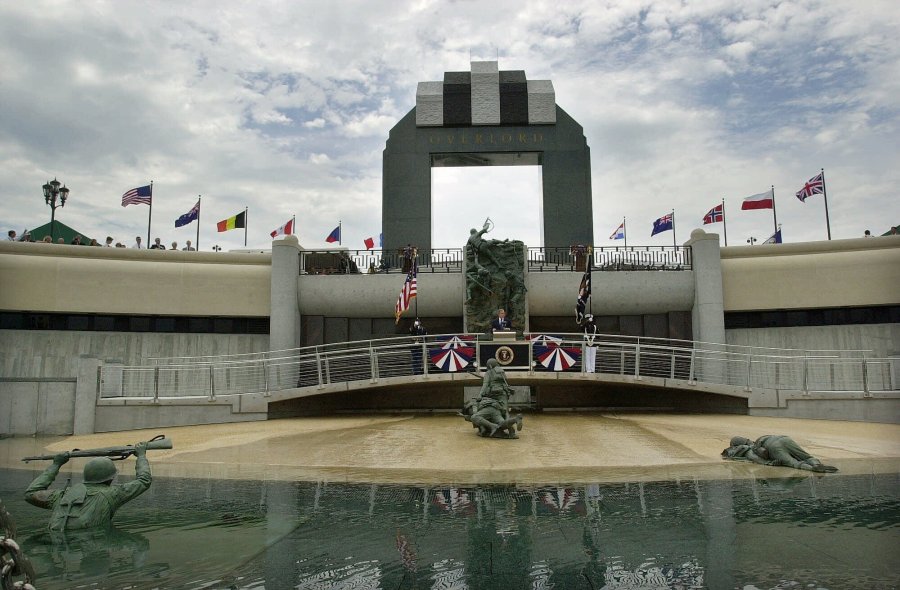
The Reverend and Mrs. J.H. Keys, of West Monroe, watched two sons head off to war, but only one returned home alive. Army Corporal Royd Keys Sr. of the 29th Infantry Division was killed in action on Omaha Beach. Before his tragic end, Royd had married Florence Farraday, of London, an Englishwoman he met overseas. His brother, Fred A. Keys, a fighter pilot, made it back home. Fred lived to the age of 92, dedicating over 50 years to serving as a Baptist preacher in Northeast Louisiana.
The pain of loss reverberated across the 29th Infantry Division, claiming heroes like Army Medic Joe Frances Peters Jr., of Shreveport, Army Private Whitney J. Faulk, of New Orleans. Claude Huston Brownell and Army Private First-Class Frank J. Cheek, sons of Louisiana, also fell on Omaha Beach, their names now somberly etched in the annals of bravery. Let us remember Army Sergeant John Randolph Hall, of Oak Grove, who valiantly served with the 1st Division, 16th Infantry Regiment, Company E. His life was tragically cut short on the unforgiving sands of Omaha Beach.
Louisiana also mourned the loss of Army Sergeant George Edmund Weil, of Rayne, who bravely fought alongside the 2nd Infantry Division, 38th Infantry Regiment, Company K. His sacrifice on Omaha Beach serves as a reminder of the heavy toll exacted by war and the profound loss felt by his loved ones and community.
From the airborne assaults of the 82nd and 101st Airborne Divisions to the courageous stand of the 1st and 2nd Infantry Divisions, Louisiana’s sons fought valiantly, their bravery immortalized in history.
The 82nd and 101st Airborne Divisions led the daring airborne assault in Operation Overlord, dropping over 160,000 Allied troops into Normandy. Their bravery disrupted German supply lines, enhancing Allied strength. Flown by C-47 planes, the elite paratroopers departed England at 11 p.m. on June 5, landing behind Utah Beach just before the naval invasion, their courage echoing through history.
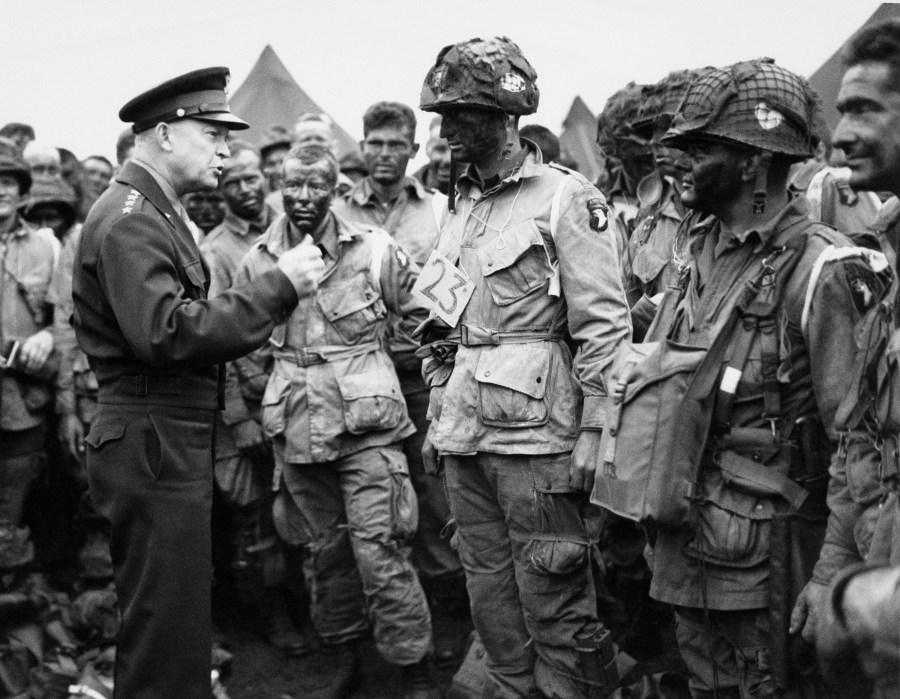
Three more brave Army paratroopers, Sidney J. DeRise Jr. of Rayne, Bose Frank Kelly Jr., of Shreveport, and Andrew Winthrop Kling, of Dutchtown, made the ultimate sacrifice during the invasion. All three served with the 82nd Airborne, 507th Parachute Infantry Regiment, Headquarters Company.
Kling’s fate took a harrowing turn when he, along with six fellow paratroopers, was captured by German forces at Hemevez, France. Their ordeal culminated in the horrifying Massacre at Hemevez. After enduring German interrogation, they were mercilessly led to a wooded area and executed.
The pain of loss reverberated through the Kelly family as Bose Frank Kelly Jr.’s younger brother, William George Kelley, served as a Bombardier Navigator. Tragically, William met his end in a training crash in November of 1944. Now, both brothers rest in eternal peace at Greenwood Cemetery in Shreveport.
Army Paratrooper George Strickle Baragona of the 82nd Airborne Division, 507thParachute Infantry, HQ Command landed with fellow paratroopers on D-Day near Graignes, France, and became part of a tragic yet heroic story. The villagers courageously hid and aided the soldiers, but nearly a week later, on June 12, German forces overran the village, killing many, including citizens, soldiers and the town priest.
Baragona’s body was found in a mass grave with 24 French and American soldiers, all of whom died defending the town. Although his official date of death is June 6, it is believed he was among those killed later. This is remembered as the Battle of Graignes.
Baragona is buried in Slidell at the Our Lady of Lourdes Cemetery, a testament to his sacrifice.
Army Private Fred Woodrow Newton, of West Monroe, a paratrooper with the 82nd Airborne Division, 508th Parachute Infantry, Company C, became one of the first tragic casualties on D-Day. He jumped into the darkness of Normandy at around 2:30 am. Newton was killed in action. He left behind a grieving wife and son to mourn his loss. Today, he rests in the solemn grounds of Hasley Cemetery in West Monroe.
Army Corporal Albert Gerard Callais, of Plaquemine, hailed from a large family in Iberville Parish. He had 12 siblings. Three Callais brothers went to war, but only two returned home. Albert is honored at the Normandy American Cemetery in Colleville-sur-Mer, France. He served with the 82nd Airborne Division, 320th Field Artillery Battalion. Tragically, Albert was killed in action on June 6 at the age of 28.
His brothers, Stanley and Adrian, also served in the Army. Adrian returned home safely and retired from the City of Plaquemine after 30 years of dedicated service.
Army Sergeant John W. Emanus was 29 years old when he was killed in action. He was from Zwolle, Louisiana, and was assigned to the 82nd Airborne Headquarters Company.
Army paratrooper John Champagne Berlin of the 101st Airborne, 501st Parachute Infantry, boarded a Douglas C-47A “Skytrain” Troop Transport plane, bound for a parachute drop over France. However, their journey ended abruptly when German Anti-Aircraft fire downed their plane, claiming the lives of all 21 onboard. Berlin from New Orleans remains listed as missing in action, his fate a haunting mystery to his loved ones.
Tragically, the same fate befell Army paratrooper John E. Bray Jr., another New Orleanian, also assigned to the 101st Airborne, 506th Parachute Infantry Regiment. His Douglas C-47A “Skytrain” was shot down near Magneville, France, by German Anti-Aircraft fire. Though Bray initially survived the crash, he succumbed to his wounds, forever laid to rest at Greenwood Cemetery in New Orleans, a poignant reminder of the cruel toll exacted by war.
Army Sergeant Leonard Alexander Davis of Belmont, a paratrooper with the 101st Airborne Division, 501st Parachute Infantry Regiment, Company A, landed off course on D-Day. He successfully reached friendly lines with fellow paratroopers, only to face a German ambush in an apple orchard.
Army Private Simpson P. Courson was from Bastrop. He served with the 101st, 502nd Parachute Infantry Regiment, 2nd Battalion, Headquarters Company. He was recorded as being killed in action on June 6 and 19 days (about two and a half weeks) later June 25, 1944. He is buried at the Normandy American Cemetery, Colleville-sur-Mer, France.
Army First Lieutenant James Drayton Holstun III, a paratrooper with the 101st Airborne Division, 506th Parachute Infantry Regiment, met a tragic end at the hands of German machine gun fire. Leading his men down a dirt road at three in the morning, he was cut down instantly, his promising life extinguished in an instant. Hailing from Gibsland, Louisiana, he left behind a grieving mother and a sister in New Orleans, forever shattered by his loss.
Army Air Forces First Lieutenant Howard Carey Brewster, a native of Ruston, met a tragic end at just 26 years old. He was serving his country as a Glider Pilot with the 84th Squadron, 437 Troop Carrier Group, his final mission ended in heartbreak. His glider carrying a Jeep and other essential items collided with an apple tree, claiming Brewster’s life and that of a fellow passenger. As he tragically departed this world, Brewster left behind a grieving wife.
The tragic loss of Army Technical Sergeant Francis Guillory, the oldest Louisianan to perish in action at 33, resonates deeply. As the top turret gunner on a B-24J Liberator, Guillory was on his 23rd mission, six months after arriving in England. Tragically, their plane disintegrated after takeoff from Hethel, Norfolk, England, to support the D-Day invasion, claiming the lives of all ten aviators aboard. Guillory’s widow was left to mourn his loss. He now rests in Saint Paul Cemetery in St. Landry Parish, Louisiana.
Army Air Forces Staff Sergeant Alvin T. Rainey, of Orleans Parish, served as a radio operator with the 7th Bomber Squadron, 34th Bomber Group. His B-24 Liberator, initially assigned to the 486th Bomb Group and nicknamed “Tommy Thumper,” flew seven missions before being transferred and renamed “Misery Agent.” On D-Day, the aircraft embarked on its first mission with the 34th Bomb Group. Tragically, as it flew toward Normandy to support the assault on the beachhead, it ran out of fuel at 9:45 a.m. and crashed into trees near Corfe Castle, Dorset. The aircraft exploded on impact, igniting a fire that killed all on board.
The remains of six crew members were recovered from the wreckage, alongside several unexploded bombs. The loss of Staff Sergeant Rainey and his comrades is a somber reminder of the sacrifices made on that fateful day.
Navy Petty Officer Glenn William Soap, of Shreveport, met his fate at sea, assigned to USS LCT-593. The landing craft, tasked with delivering crucial tanks to the Normandy beachhead, tragically struck a mine, sinking with four tanks lost. Soap’s sacrifice, along with his fellow sailors’, underscores the perils naval personnel face in the tumultuous waters of war.
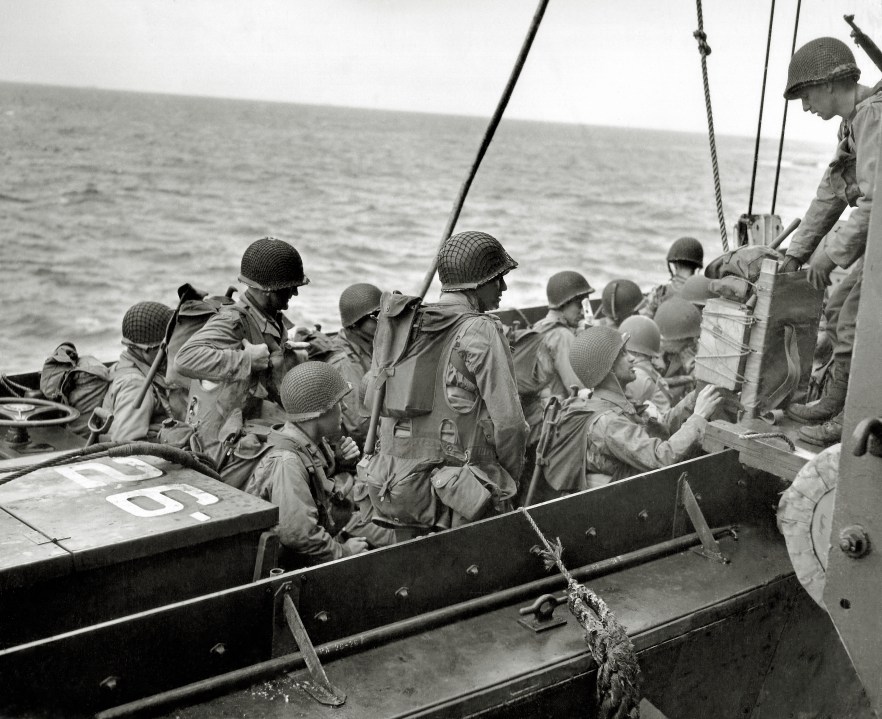
Navy Petty Officer First Class Richard David Harang, of New Orleans, served with the Seventh Beach Battalion NCDU. Among the brave 35 men of the naval combat demolition unit lost during the chaos of the D-Day invasion, Harang’s sacrifice stands as a solemn reminder of the immense sacrifices made by Navy personnel during this pivotal moment in history.
Navy Petty Officer Glenn William Soap, of Shreveport, was lost at sea while assigned to USS LCT-593. The landing craft sank after striking a mine off the Normandy beachhead, resulting in the loss of four tanks. Soap is remembered at the Tablets of the Missing at Normandy American Cemetery, Colleville-sur-Mer, France.
Army Technician Fifth Grade Alexander Oakley Jr., hailing from New Orleans, made the ultimate sacrifice in service to his country. Oakley bravely served with the 467th Anti-Aircraft Artillery Automatic Weapons Battalion, facing the horrors of war with courage and resolve. Today, he rests in eternal peace at St. Louis Cemetery Number 3 in New Orleans.
Army Corporal Sidney Manual, of Eunice, served with distinction in the 58th Armored Field Artillery Battalion. On the early morning of June 6, the 58th made the crossing from England and landed on Omaha Beach. Manual died on Omaha Beach at the age of 30.
The Shreveport Times edition of April 3, 1945, brought the heart-wrenching news that Army Technician Fourth Class Luther C. Lockey, of Shreveport, was listed as missing in action. Lockey went overseas in 1943 and, by his disappearance, served with distinction in the 743rd Tank Battalion, Company B, for five years. Today, Lockey remains missing in action and is solemnly honored among the Tablets of the Missing at the Normandy American Cemetery in Colleville-sur-Mer, France.
Army Staff Sergeant Clarence Anthony Uzee, of Lockport, died of wounds he suffered on Omaha Beach. He served with the 1st Infantry Division, Engineer Combat Battalion, Company B. He is buried at Holy Savior Church Cemetery in Lockport.
Army Private Reginald William Brock, of Rayville, made the ultimate sacrifice, his life cut short in service to his country. Assigned to the 146th Engineer Combat Battalion, Brock faced the horrors of war with courage and resolve, only to meet his untimely end on Omaha Beach.
Similarly, Army Private First Class J.T. Pardue, of Crossroads, died on the blood-soaked sands of Omaha Beach. Serving with the 299th Engineer Combat Battalion, Company A, Pardue’s young life was cruelly taken in the chaos of battle, leaving behind a legacy of bravery and sacrifice.
As the echoes of war faded, Louisiana bore the scars of loss etched deep within its communities. From Shreveport to Eunice, from New Iberia to Slidell, and to New Orleans, families endured the anguish of separation as their loved ones marched off to distant battlefields.
Stay up to date with the latest news, weather and sports by downloading the WGNO app on the Apple or Google Play stores and by subscribing to the WGNO newsletter.
